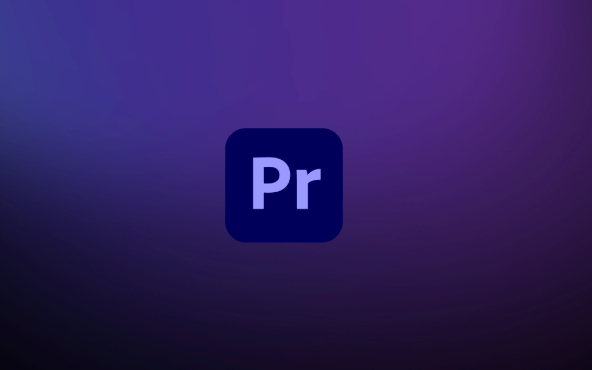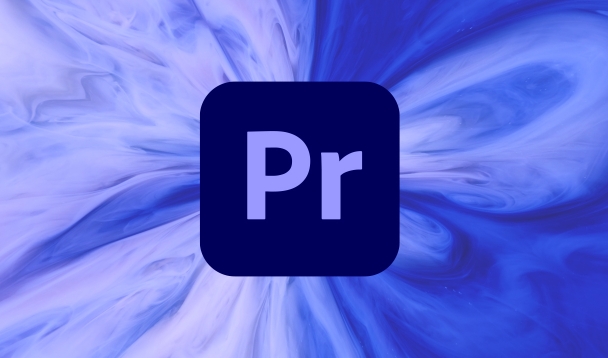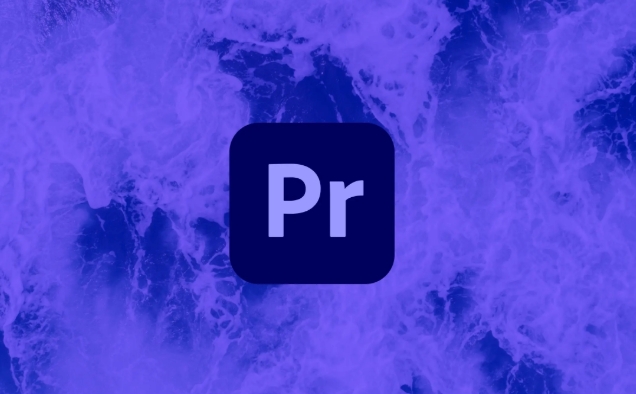how to use scene edit detection in Premiere Pro
Scene edit detection is a function in Premiere Pro that automatically recognizes the position of the lens switching in a video. It quickly marks editing points by analyzing the changes in the screen content, which is suitable for sorting out original materials such as interview recording and activity recording. The usage method is as follows: 1. Right-click and select "Scene Editing Detection" after importing the material; 2. Set the analysis range, target sequence and audio loudness analysis; 3. Click "Analysis" to generate marked sequences or segmentation fragments. The detection results can be used for rough cut reference, multi-camera synchronization, exporting mark lists, etc. Notes include: Slow transitions may be inaccurately identified, transition effects are prone to misjudgment, it is recommended to test first and then batch processing, and existing marks can be merged during testing. This function can significantly improve the efficiency of pre-recording of editing.

Use Scene Edit Detection in Premiere Pro to quickly identify the position of the shots in the material, thereby automatically placing or splitting clips for editing. This is especially practical when organizing long video materials or rough cutting.

What is scene editing detection?
Simply put, this is a built-in analysis function in Premiere Pro. It can determine where the editing point occurs by changing the screen content (such as a sudden change of lenses). You can understand it as a tool that "automatically recognizes clip points".

This feature is suitable for use on the original material of the shooting, especially those without markings and unclear timelines. For example, interview video, event recording, Vlog material, etc.
How to enable scene editing and detection
It is actually quite simple to use this function, the steps are as follows:

- Import the video material you want to analyze to the project panel
- Right-click the material and select "Scene Edit Detection" (or " Scene Edit Detection ", the English version is Scene Edit Detection)
- Set parameters in the pop-up window:
- Analysis scope : You can choose to analyze only the part between the in-point and the out-point, or the entire file
- Target sequence settings : After checking, the sequence with clipping points will be automatically generated based on the detection results.
- Audio loudness analysis : Although it is not necessary, but adding this can make the analysis more comprehensive
- Click "Analysis" and wait for the processing to be completed
After processing is completed, Premiere generates a sequence of markers, and each detected clip point is displayed in markers. If you enable "Target Sequence Settings", the material will be automatically cut by the editing point.
How to use these test results?
After the detection, you will see two newly generated elements: one is the sequence containing the marks, and the other may be the split set of fragments.
You can view the detection effect directly on this sequence. If some places are misjudged, you can manually delete the corresponding mark or fragment. These markers can also be used as rough cut references to help you locate key lenses faster.
If you want to apply these clip points to other materials, such as synchronization points in multi-camera clips, you can also export the marker list and import it into other projects.
In addition, if you are doing automatic refactoring timelines (Auto Reframe) or other AI-based functions, these detection points can also be used as reference frames.
Notes and tips
- Where the scene changes too slowly or the transition is vague, the detection may be inaccurate.
- If the material itself has transition effects (such as superposition), it may be misjudged as multiple editing points
- It is recommended to preview a short section to test the effect before batch processing
- The detection process will occupy certain system resources, especially high-resolution materials. It is recommended to close other large programs.
There is also a tip: If you have manually added some tags, you can select "Merge existing tags" when checking, so that you won't overwrite your previous work.
Basically that's it. Mastering this function can help you save a lot of time in organizing materials in the early stage, especially when you need to quickly browse a large amount of content.
The above is the detailed content of how to use scene edit detection in Premiere Pro. For more information, please follow other related articles on the PHP Chinese website!

Hot AI Tools

Undress AI Tool
Undress images for free

Undresser.AI Undress
AI-powered app for creating realistic nude photos

AI Clothes Remover
Online AI tool for removing clothes from photos.

Clothoff.io
AI clothes remover

Video Face Swap
Swap faces in any video effortlessly with our completely free AI face swap tool!

Hot Article

Hot Tools

Notepad++7.3.1
Easy-to-use and free code editor

SublimeText3 Chinese version
Chinese version, very easy to use

Zend Studio 13.0.1
Powerful PHP integrated development environment

Dreamweaver CS6
Visual web development tools

SublimeText3 Mac version
God-level code editing software (SublimeText3)
 how to create a timecode overlay in Premiere Pro
Jul 19, 2025 am 01:23 AM
how to create a timecode overlay in Premiere Pro
Jul 19, 2025 am 01:23 AM
There are two ways to add time code overlays in PremierePro: visual time code and metadata embedding. 1. The visual time code is realized through the "time code" effect, which is suitable for the film review stage, and the font, position and other styles can be adjusted; 2. Metadata embedding is checked "Write time code to video" when exporting, which is suitable for delivery and is supported for MP4 and MOV formats. Pay attention to the starting time code setting, timeline continuity and software version compatibility issues during operation.
 what is a MOGRT file for Premiere Pro
Jul 19, 2025 am 01:04 AM
what is a MOGRT file for Premiere Pro
Jul 19, 2025 am 01:04 AM
AMOGRTfileisamotiongraphicstemplateforAdobePremiereProthatenablesquickimportandcustomizationofanimatedelements.Itcontainspre-builtanimationswithadjustablecontrolsfortext,color,duration,andlayoutwithoutleavingPremierePro.Commonusesincludelowerthirds,t
 how to use LUTs in Premiere Pro
Jul 14, 2025 am 12:32 AM
how to use LUTs in Premiere Pro
Jul 14, 2025 am 12:32 AM
To load and apply LUT in PremierePro, first open the "Window" > "LumetriColor" panel, select "Browse" in "Input LUT" under the "Basic Correction" tab to import the LUT file. The supported formats include .cube (strongly versatile), .look (Special for Adobe) and .3dl (poor compatibility). It is recommended to choose .cube format first; when using LUT, please note: 1. Confirm whether the material is in Log format to decide whether to use Log to Rec709 LUT; 2. Avoid overlaying multiple LUTs to cause confusion; 3. The mixing ratio of LUTs can be adjusted to achieve a more natural style transition; LUT is the starting point rather than the end point of color adjustment, and it still needs to be drawn according to the drawing.
 how to unlink audio and video in Premiere Pro
Jul 16, 2025 am 12:13 AM
how to unlink audio and video in Premiere Pro
Jul 16, 2025 am 12:13 AM
The first step in separating audio and video in PremierePro is to use the Unlink feature. Right-click the clip on the timeline → select "Unlink" to unlink the audio and video synchronous binding and allow individual movement; if you need to completely delete a certain part, you can expand the track content → select the unnecessary part → press Delete to delete; after the processing is completed, you can recombine the audio and video by manually aligning or using "Create Multi-Track Selection" (Ctrl/Cmd G). It should be noted that "Unlink" is not a permanent split, and the association can still be restored (right-click → "Relink"), but it is difficult to restore after export. It is recommended to back up the project file before operation.
 how to automatically duck music in Premiere Pro
Jul 17, 2025 am 12:28 AM
how to automatically duck music in Premiere Pro
Jul 17, 2025 am 12:28 AM
ToachieveaudioduckinginPremierePro,usetheEssentialSoundpanelforautomaticadjustmentsormanualkeyframingformorecontrol.First,ensuredialogueandmusicareonseparatelabeledtracks.IntheEssentialSoundpanel,selectthemusicclip,enable“AutoDuck,”andchoosethevoiceo
 how to use the track matte key in Premiere Pro
Jul 25, 2025 am 01:18 AM
how to use the track matte key in Premiere Pro
Jul 25, 2025 am 01:18 AM
Use TrackMatteKey in PremierePro to control the display range of another layer through the brightness or transparency of one layer. 1. Commonly used in scenes such as text masking, graphic outline display, and video embedding medium shape; 2. Setting steps include: putting the content video on the upper layer, putting the mask layer down layer, applying TrackMatteKey and setting Matte to the lower layer; 3. Supporting two modes: LumaMatte (based on brightness) and AlphaMatte (based on transparency), and you can check the Reverse inverting mask effect. Master the layer order, Matte type selection and Reverse status to achieve diverse creative effects.
 how to edit 360 video in Premiere Pro
Jul 18, 2025 am 12:37 AM
how to edit 360 video in Premiere Pro
Jul 18, 2025 am 12:37 AM
The key to editing 360 videos in PremierePro is to preserve spatial orientation information and correctly set VR properties. 1. After importing, right-click the material and select "Set as VR material" or specify an isometric columnar projection format in the sequence settings; 2. Use the VR viewing angle tool to adjust the default viewing direction to ensure visual consistency; 3. Avoid fast mirror cutting and strong directional transitions during editing, and place the subtitles in the center of the field of view; 4. When exporting, check "VR Video", select the appropriate resolution and bit rate, and test the playback effect to ensure no deformation or black edge problems.
 how to clear media cache in Premiere Pro
Jul 23, 2025 am 01:29 AM
how to clear media cache in Premiere Pro
Jul 23, 2025 am 01:29 AM
PremierePro media cache will occupy a lot of space as the usage time increases. Cleaning methods include: 1. Manually delete .cfa and .exa files in the cache folder, with the path to Windows system C:\Users\username\AppData\Roaming\Adobe\Common\MediaCache or Mac system/Users/Users/Users/Username/Library/Caches/Adobe/Common/MediaCacheFiles; 2. Use Premiere built-in functions to clean it through "File>MediaCache>Delete Media Cache Files"; 3. Regular maintenance recommended to clean it after completing the project







